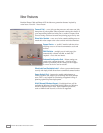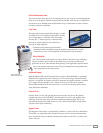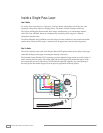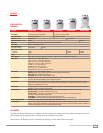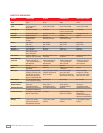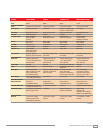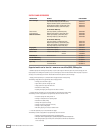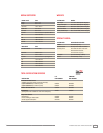
12
PHASER 6300/6350 EVALUATOR GUIDE
The Phaser 6300/6350 families of color printers were designed specifically to be shared. Built tough,
they have the rugged reliability to pump out up to 100,000 pages per month (120,000 for the 6350
printers) in support of a busy workgroup.
Simple network installation is a Phaser printer hallmark. Just a few mouse clicks and the rest is
automatic. Your new printer will be ready to support all network users in a matter of minutes. No IT
support is required. In the case of a large enterprise wide roll out of new printers, the IT department
can send an automatic install link to all users on the network and installation will be just as simple.
Both the Phaser 6300 and 6350 printer families are built on an 800 MHz Power PC processor so they
handle even complex jobs with ease. Up to 1 GB of memory and a 20 GB hard drive (standard on the
6350DX) helps keep multiple jobs moving through the print queue fast.
With up to 2350-sheet input capacity from five different sources, the Phaser 6300/6350 printers are
ready to handle both the volume and variety associated with a busy workgroup.
An enhanced Usage Analysis Tool (UAT) enables administrators to collect, organize, and analyze job
accounting data from multiple printers. It is often used to roll-up usage statistics by individual user or
group in order to calculate charge-back billing or to plan for optimized printer deployment.
PostScript drivers will be available for Windows Server 2003 64-bit Edition and Windows XP 64-bit
Edition Version 2003. X86-compatible processors, such as AMD-64 and Xeon-64, will also be supported.
HOW THE PHASER 6300 AND PHASER 6350 EXCEED THE
WORKGROUP SHARING REQUIREMENT:
No matter how powerful and easy-to-use a printer is, it must also be considered a shared resource
in today’s busy business environment.
Consider the network capabilities and network installation process.
Is an IT specialist required to get the printer up and running on the network?
Consider processing power, memory and print speed.
Does the printer have sufficient power to process and store multiple jobs simultaneously?
Consider capacities.
Does the printer have large consumable capacities to support continuous operation and
minimize downtime? Are there multiple input sources to support the varied needs of
different users?
Consider usage tracking.
Can the printer keep track and report usage information for accounting purposes?
Consider cost.
Does the printer support a large workgroup so capital costs and operating expenses can be
kept low on a cost per user basis?
EVALUATE WORKGROUP SHARING



